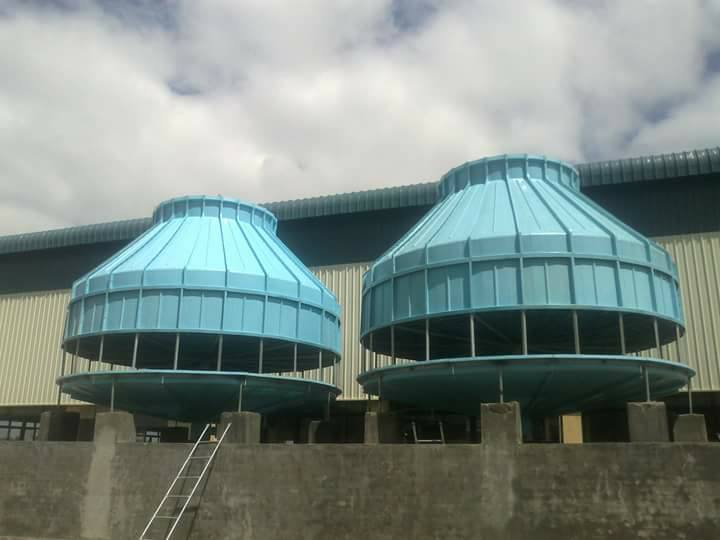Range vs. Approach in Cooling Towers – Key Differences
In cooling tower performance, Range and Approach are two critical parameters that define efficiency and capacity. Here’s a breakdown of their differences and significance:
1. Definitions
| Parameter | Definition | Formula |
| Range (°F or °C) | The temperature drop of water as it passes through the tower. | Hot Water Inlet Temp – Cold Water Outlet Temp |
| Approach (°F or °C) | How close the cold water gets to the ambient wet-bulb temperature (WBT). | Cold Water Outlet Temp – Wet Bulb Temp |
2. Graphical Representation
text
Hot Water Inlet (T1)
│
▼ Cooling Tower
│
Cold Water Outlet (T2) —— Approach ——→ Wet Bulb Temp (WBT)
▲
│
Range
▼
(T1 - T2)
3. Key Differences
| Aspect | Range | Approach |
| What it measures | Cooling capacity (temperature drop) | Cooling efficiency (how close to WBT) |
| Dependent on | Heat load & water flow rate | Tower design & ambient conditions |
| Impact on Tower Size | Higher range → Larger cooling capacity needed | Smaller approach → More efficient tower |
| Typical Values | 10-30°F (5-15°C) | 5-10°F (3-6°C) for well-designed towers |
| How to Improve | Increase flow rate or heat load | Better fill media, airflow optimization |
4. Practical Implications
A. Range (ΔT) – Determines Cooling Load
- Higher Range → More heat removed, but requires larger tower or higher flow rate.
- Lower Range → Less cooling capacity needed, but may require longer retention time.
Example:
- If a tower cools water from 100°F to 85°F, the Range = 15°F.
- Doubling the range (e.g., 100°F → 70°F, Range = 30°F) would require twice the cooling capacity.
B. Approach – Determines Efficiency
- Smaller Approach → Tower is more efficient (cold water closer to WBT).
- Larger Approach → Indicates poor performance (due to fouling, low airflow, or bad design).
xample:
- If WBT = 75°F and Cold Water = 80°F, Approach = 5°F (efficient).
- If Cold Water = 85°F, Approach = 10°F (less efficient).
5. Relationship Between Range & Approach
- For a given heat load, if Range ↑, Approach ↑ (tower must work harder).
- To reduce Approach, you may need:
- Better fill media (increases surface area for evaporation).
- Higher airflow (improves heat exchange).
- Cleaner water (reduces fouling).
6. Which is More Important?
- Range → Dictates cooling capacity (how much heat is removed).
- Approach → Dictates tower efficiency (how well it performs).
Best Practice:
- Optimize Approach for energy efficiency.
- Adjust Range based on heat load requirements.
Final Summary
| Parameter | Meaning | Impact on Cooling Tower |
| Range | Temperature drop (T1 – T2) | Determines cooling capacity |
| Approach | How close to WBT (T2 – WBT) | Measures efficiency |
For optimal cooling tower performance:
